
Emily Conover
Physics, Senior Writer, Science News
Physics writer Emily Conover loves physics for its ability to reveal the secret rules about how stuff works, from tiny atoms to the vast cosmos. Before becoming a science journalist, she studied physics at the University of Chicago. There, she investigated the weird ways of tiny particles called neutrinos. She has previously written for the Milwaukee Journal Sentinel, Science Magazine and the American Physical Society. She is a two-time winner of the D.C. Science Writers’ Association Newsbrief award.

All Stories by Emily Conover
-
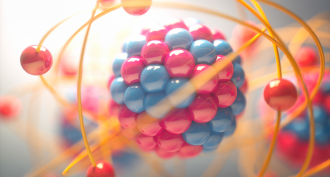 Physics
PhysicsMuch of a proton’s mass comes from the energy of the particles inside it
Thanks, Einstein! Your famous E=mc2 formula now explains much of a proton’s ‘mass.’ Its building-block quarks make up just a small part of its left, calculations now show.
-
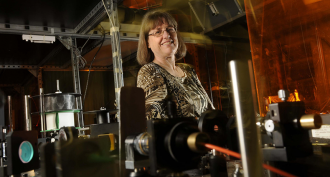 Physics
PhysicsDazzling laser advances bring physicists a Nobel Prize
The winners of 2018 Nobel Prize in physics helped usher in new laser feats, such as making optical “tweezers” and creating amazingly bright beams of light.
-
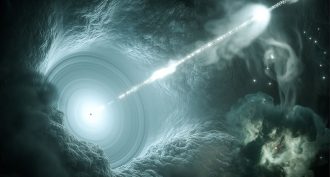 Physics
PhysicsScientists traced an incoming neutrino back to its galactic birthplace
The high-energy particle was born in a blazar 4 billion light-years away, scientists now report.
-
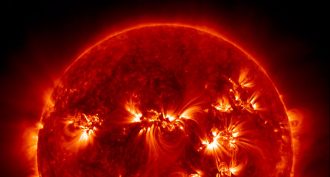 Space
SpaceAn active sun is a somewhat smaller sun
The sun grows and contracts a little over cycles lasting around 11 years, new data show. Changes in the strength of its magnetic fields may help explain this.
-
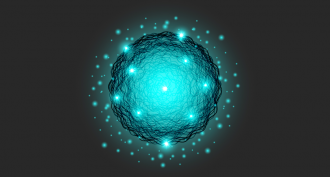 Physics
PhysicsTo witness maximum pressure, peek inside a proton
Scientists used experimental data to estimate the pressures inside a proton. And surprise: Its mega-big — the greatest known!
-
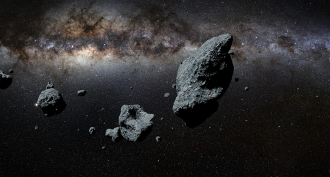 Chemistry
ChemistryDiamonds and more suggest unusual origins for asteroids
Inside a meteorite, scientists found sulfur and iron wrapped in tiny diamonds. Those gems hint the rock formed inside a long-lost planet.
-
 Health & Medicine
Health & MedicineScientists offer new explanation for knuckle-cracking
That annoying pop may come from the partial collapse of bubbles in the joint fluid.
-
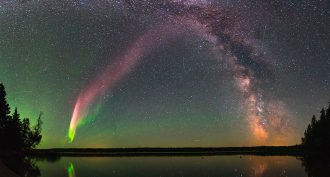 Physics
PhysicsMeet STEVE, the northern lights in mauve
STEVE is a nontraditional aurora. It might be a visible version of usually invisible charged particles drifting through Earth’s upper atmosphere.
-
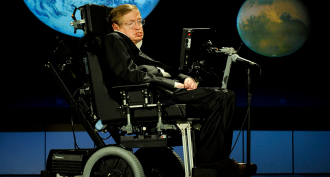 Science & Society
Science & SocietyLegendary physicist Stephen Hawking dies at 76
Theoretical research by Stephen Hawking helped shape how scientists and the public alike would come to understand black holes and other facets of astrophysics.
-
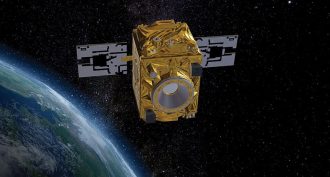 Physics
PhysicsMajor gravity experiment recreated aboard a satellite
A spacecraft was used to “drop” two objects and test their rate of fall. The new, super-precise findings confirm objects will fall at the same rate (in the absence of air resistance) — and that when it comes defining the effects of gravity, Einstein got it right.
-
 Physics
PhysicsYou can peel permanent marker, intact, off of glass
The surface tension of water can essentially scrape a thin film of some water-repellent material — such as permanent ink — off of glass.
-
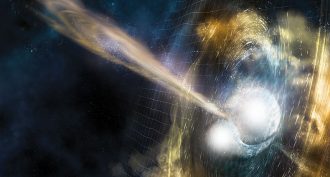 Physics
PhysicsAstronomers finally find the cosmic source of gold and silver
After a collision between neutron stars is caught rippling spacetime, telescopes home in on where the ripples came from. The afterglow of light they found provided interesting new science.